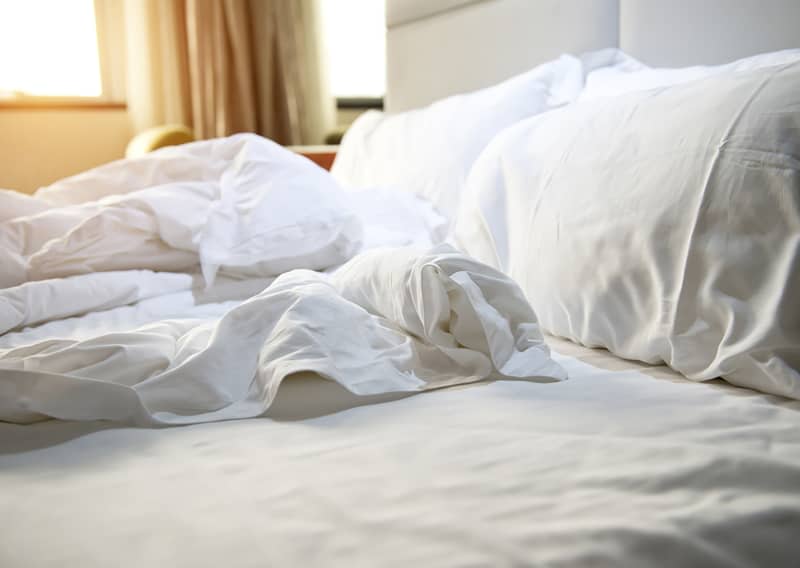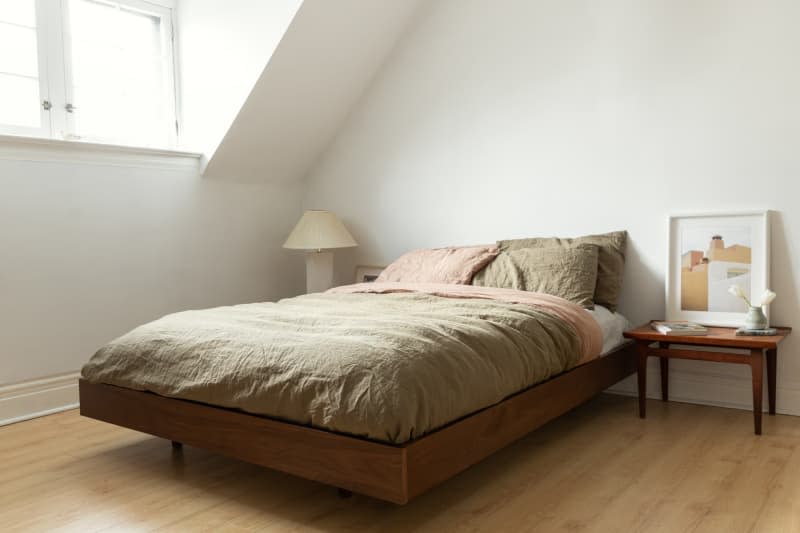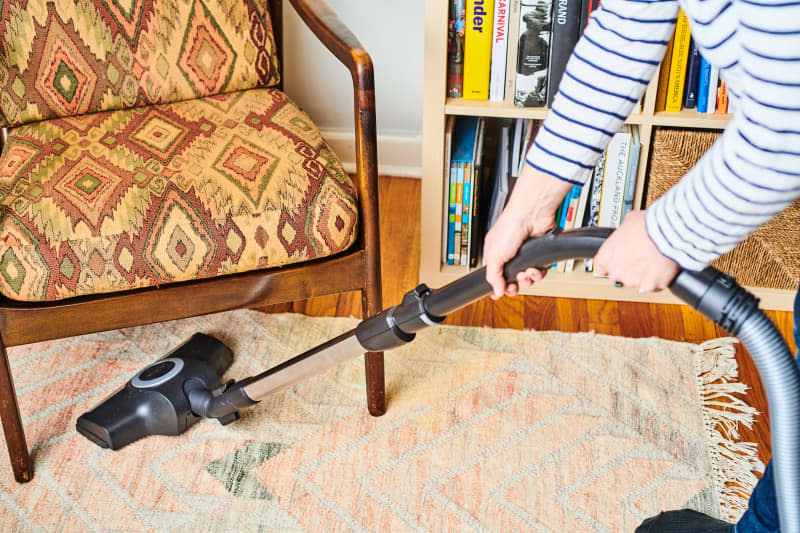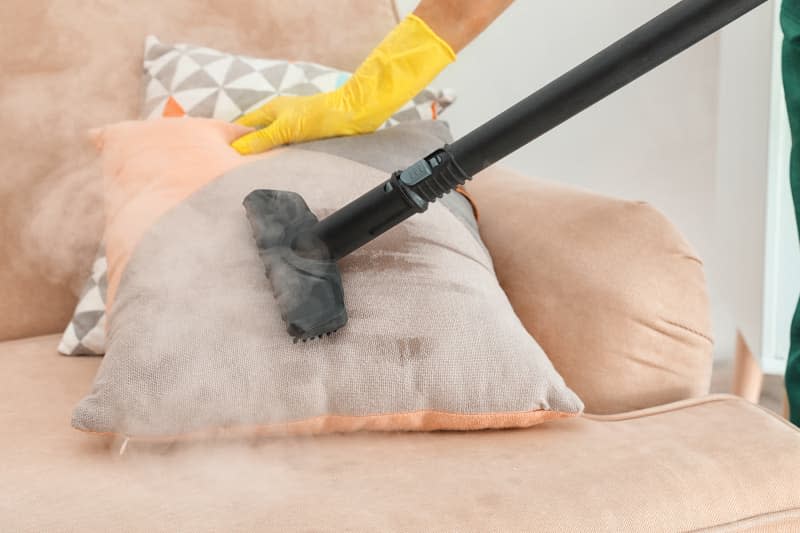Keep Dust Mites out of Your Bed with These 5 Expert-Approved Tips

For the last couple of years, I’ve been dealing with allergies, sneezing mostly at night as I tried to sleep. So I decided to see a doctor. “Wow, you’re very allergic to dust mites,” he said after the results of my allergy test came in. Given that dust is pretty much everywhere, it seems encountering dust mites is inevitable. Not so fast! There are some simple steps you can take to get rid of dust mites and stop them from overwhelming your sinuses.
“If you can reduce where dust mites can live, you can help reduce their footprint,” says Mallory Micetich, an Angi Home Expert. I asked Micetich about the best ways to keep dust mites out of your bed, carpets, and more, and here’s what she suggests.
What are dust mites?
Before you start on the path to ridding your house of dust mites as best as you can, you want to know what you’re looking for.
Dust Mites vs. Bed Bugs
Unlike bed bugs, which are often confused with dust mites, you can’t see dust mites — but you can spot places in your home where they like to cozy up. “A dust mite is microscopic and can’t be seen with the naked eye, while a bed bug is larger and darker in color and can be seen with your eyes alone,” Micetich says.
“Additionally, dust mites don’t bite you; [they] feed on dead skin cells that are left behind in your bed and around your home,” she explains. Bed bugs, on the other hand, “feed on the blood of people and animals generally while they sleep,” according to Micetich.
Dust Mite Allergies
Anyone can be affected by dust mites, even if you haven’t officially been diagnosed with an allergy. Warning for the squeamish: The reason you sneeze when encountering dust mites is a little gross. When you sneeze because of dust or dust mites, you’re reacting to the proteins released in dust that come from “dust mite feces, urine, or decaying bodies,” according to the American Lung Association.
How to Get Rid of Dust Mites
Indoors, dust mainly comes from tiny particles of skin, hair, and polluted air, according to National Geographic. And dust mites feed on the plethora of dead skin cells collected in dust. So, the more dust you have, the likelier you are to have dust mites.

Ditch Rugs and Curtains
Dust mites enjoy warm areas they can settle in, which means that they find soft materials and warm layers just as appealing as you do. “Dust mites will be found in carpets, curtains, mattresses, and upholstered items,” says Micetich.
Your best bet for keeping dust mites out of your living space is to choose hardwood floors over carpet and shutters instead of curtains, according to Micetich. But if you can’t make those swaps, there are other ways to address the issue.
For example, keep only the clothes you’re currently wearing in your closet and store seasonal items away in a separate place. You can also donate surplus textiles, like blankets, that you don’t need. “Get rid of any stuffed animals that are older, too,” Micetich adds.
Wash Your Bedding Thoroughly
Clean must-keep cozy items on a set schedule, particularly bed linens where you’ll most likely snuggle up to dust mites. “You’ll want to wash your bedding weekly in water that is at least 130 degrees Fahrenheit and have your pillows dry cleaned every three to six months,” Micetich says.

Vacuum and Dust Often
You may already be in the habit of cleaning regularly, but keeping dust mites at bay is yet another reason to stick to a routine. “For any carpets, rugs, or other fabrics, you should vacuum them twice per week,” according to Micetich.
She adds that you should dust once a week. For best results, use a microfiber duster or a damp cloth to actually trap and get rid of the dust. And if you know that dust mites cause an allergic reaction, then you’ll likely want to outsource the job. “It might be best to leave the cleaning to another family member or to hire a professional to help you with regular home cleaning,” she notes.
Steam Clean Occasionally
You can only do so much with regular housekeeping, so you might want to get a more intense clean once in a while. Micetich suggests hiring a steam-cleaning professional twice a year for a deeper cleaning.

Monitor Your Home’s Temperature
Dust mites prefer warm climates. “Check the humidity levels in your home,” Micetich says. “If you can keep your home a bit drier, then you will create a less inviting environment for them.”
She suggests purchasing a hygrometer for an accurate reading. If the humidity in your home is above 50%, then you could be allowing dust mites to thrive. “You may consider purchasing a dehumidifier,” Micetich says. In warmer months, you can take advantage of a few easy steps. “An air conditioner may also lower the humidity, as well as opening the windows for an hour or so on days when you can,” she explains.
Sadly, you can’t banish all dust mites forever, but you can make a pretty good impact with the cleaning tips above. “By taking these steps and being vigilant about cleaning, you can reduce the amount of dust mites and allergens in your home and prevent them from returning,” Micetich says.

